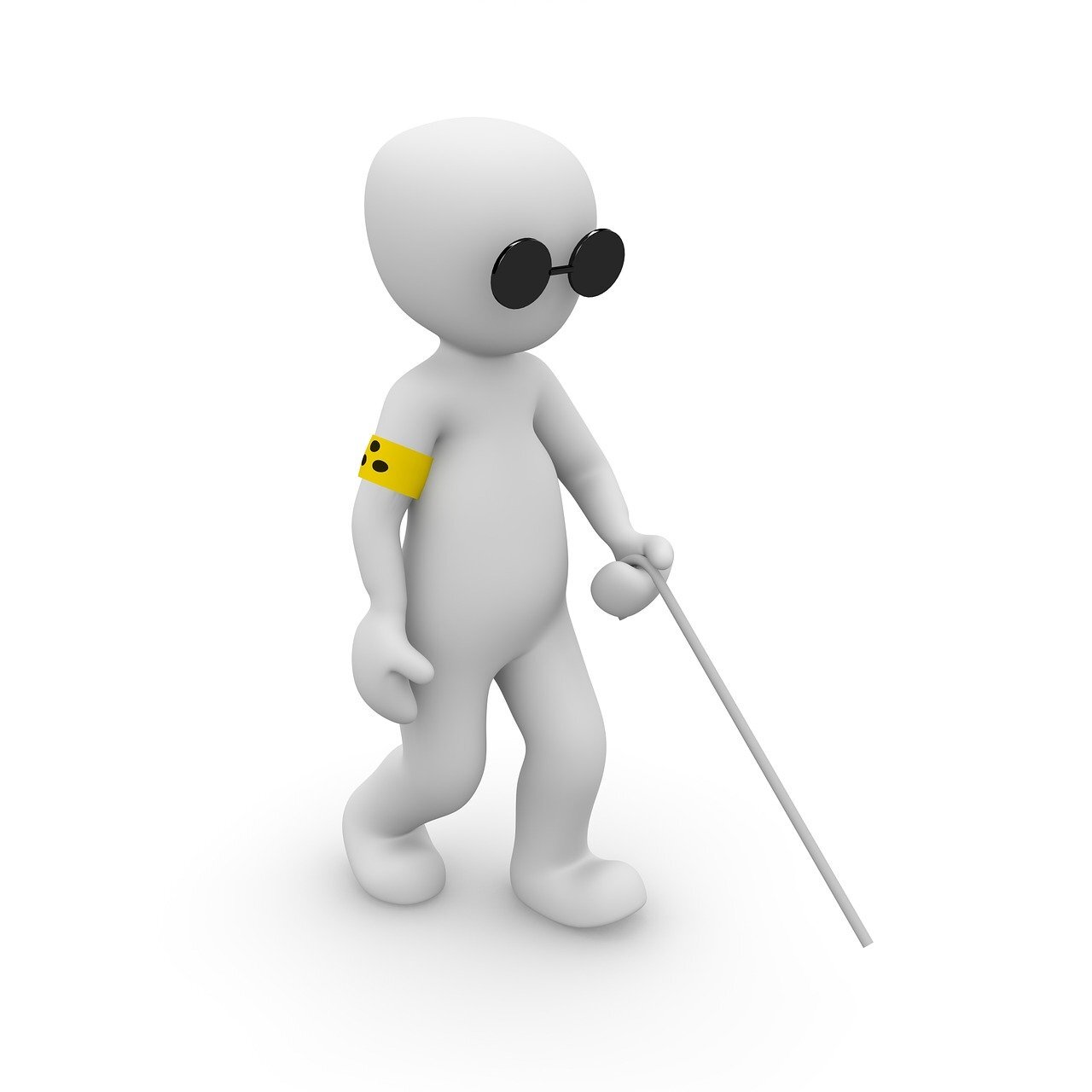8 Barriers to Therapy for People who are Visually Impaired
For people who are blind or visually impaired, finding a disability informed therapist can be a challenge. It’s hard for anyone to reach out for help when they are struggling, but there are added barriers for those with disabilities. There is a great deal of vulnerability in beginning the therapeutic process, and it can be discouraging when a practitioner does not understand the way a blind or visually impaired person needs to navigate their world. Some of these challenges and barriers are obvious, but others you may have never considered. Luckily all of them can be addressed with basic awareness and education.
This list is not exhaustive, but some of the most common barriers are:
Inaccessible Website
The barriers begin as soon as a visually impaired person starts searching for a therapist. Many websites are not screenreader accessible, and therefore, they cannot access all of the information they need to find the right person to help. This means the person may choose their therapist based on insufficient information and have to make numerous attempts, or they limit their options to those with accessible sites and information.
2. Forms for intake are not accessible
It is common for therapists to send forms in advance of the first session, or send a link to their client portal for the intake process. Many times these forms and websites are inaccessible. So, the person has to choose to inform the therapist that they need an alternate method or ask someone they know for assistance in completing the forms. Many people struggle to advocate for themselves, so they try to work it out on their own, which adds to their frustration.
3. Arrival and sign-in process
Think about what’s involved in walking into a new building/office, and how much is visual. There may be a button or keypad to get in. There may be signs that point to which direction to go. There may be a sign-in sheet or tablet to check yourself in for the appointment. How would you know any of this if you weren’t able to see the visual cues, and nobody told you?
4. Transportation barriers
Transportation can be a challenge for people with visual impairments, for some more than others, depending on the location and their financial situation. It’s common for people with disabilities to prefer services to be handled through other methods such as phone calls to reduce the burden. However, transportation barriers are rarely considered when making appointments or discussing options.
5. Video platform for online sessions, not screenreader accessible
Many practitioners now offer therapy through online services which removes the transportation barrier. Unfortunately, most of the HIPAA compliant platforms for online counseling are not screenreader accessible and would require the individual to have someone assist them on their end. Awareness of this issue and which platforms could be accessed independently would easily remedy this problem.
6. Lack of awareness and education create barriers in session
It is extremely common for people who are blind or visually impaired to have to spend a significant amount of their appointment time educating their therapist on their disability. This is frustrating and discouraging since they are coming to an expert for assistance and then having to be in charge of providing them with information. A lack of awareness also leads to many providers, not understanding what is expected or abnormal regarding the disability adjustment process. In addition, it is common for a therapist to make assumptions about problems the individual is having or validate inaccurate perceptions. This can be extremely harmful to the client when it happens.
7. Lack of awareness regarding service animals
Having a guide dog is a common choice for people who are blind or visually impaired. Those who use their dogs to navigate the world will almost always identify that the biggest problem that they have is a lack of awareness and understanding from people they encounter. Very few people know the rules and etiquette for service animals, and some that are told still choose to ignore the protocols. Imagine you were trying to build rapport with a counselor, and they repeatedly spoke to or pet your dog despite your requests, or made a statement about how much it was shedding. There is no way of having a strong therapeutic relationship with that happening.
8. Assumptions and stigma are communicated in actions and phrases
There are numerous slights and disparaging remarks which people with disabilities encounter daily. Some are minor annoyances, and others are offensive, but most of the time, the offending person is completely unaware of what they are saying or doing. It’s not okay to grab a person’s hand or arm to try to guide them. It’s not okay to talk to the person next to the person with a disability as if they aren’t there. It’s not okay to invade their personal space or touch them to convey emotion or information. And it’s definitely not alright to assume their disability is the worst thing that’s ever happened to them.
These barriers are all easily removed, and with little to no expense. Awareness is the first step. If you want to provide inclusive disability services, then take the time to educate yourself on what information you need to learn and what procedures could be modified to make working with you universally accessible.
Start with our free intro guide to disability inclusion or take one of our courses.
By Sarah Clark, LMFT, LMHC, CVRT


